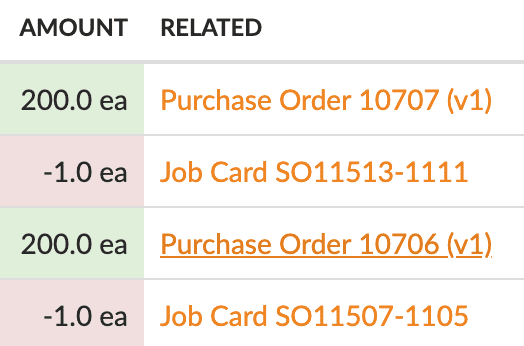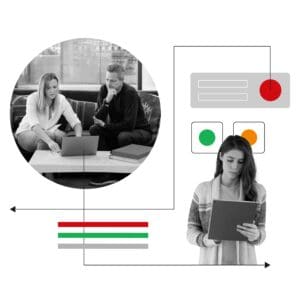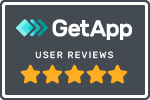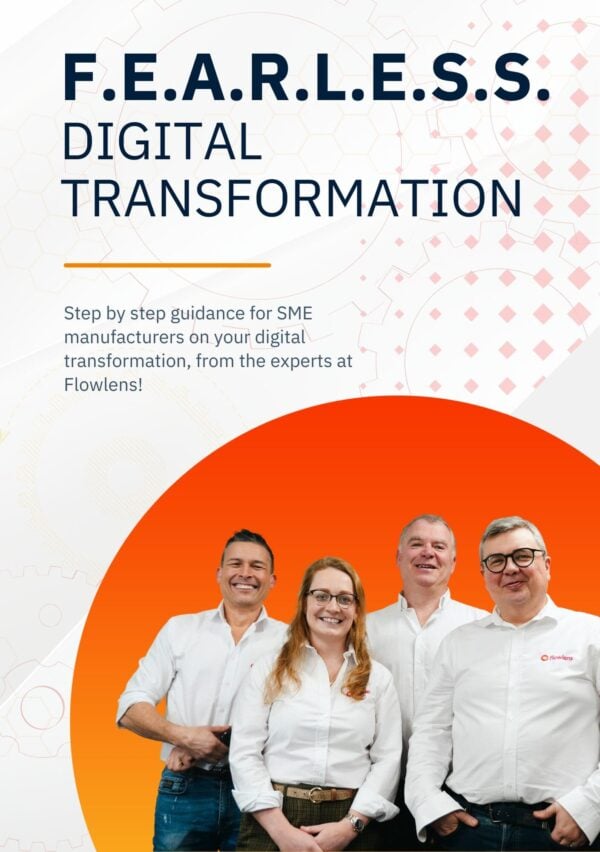ISO accreditation refers to the process of changing the way a business operates to meet the processes and methodologies defined within an ISO standard. Many ISO standards cover every industry and many different subsections within a business. However one of the most commonly implemented ISO management systems is ISO 9001. This standard defines how to implement a quality management system (QMS) to optimise business efficiency and customer satisfaction with regard to quality management. This article will describe the general process of implementing a QMS and the subsequent ISO accreditation preparation and how an MRP (Material Requirements Planning) system like Flowlens can help.
QMS accreditation process
To prepare for ISO accreditation, the first step is to build a QMS as defined in the standard. Once the system has been effectively implemented a third-party auditor must be invited to make sure the QMS is following the standard. There are normally two steps during ISO accreditation, namely the document review and implementation audit. This accreditation is repeated every three years to ensure continued compliance as well as make sure that the most recent version of the standard is being followed.
‘You’ve got to be proactive to give yourself the edge’ Nathan Peel, engineering director at Denatec
Ways an MRP system can help with an ISO accreditation
- Increased auditing speed
The document review consists of evaluating the management system documentation – which can include procedures, policies, and overall system operation – to ensure they meet the requirements as set out in the relevant ISO system.
The second step is the implementation audit, which consists of the auditor making sure that the company is following the management system. This is normally a multi-day process. However, with an MRP system like Flowlens, this process can be dramatically speeded up as both the documentation and the implementation is done through the system and actual real-world examples can be used to provide objective evidence to the auditor.
‘Use a couple of examples to demonstrate the life cycle of the management system’ Ray Dodd, GM at On-Systems
With a system like Flowlens, the quality management system is followed by default. All the information to prove compliance is only a few clicks away.
‘The objective evidence you need for your accreditation just pops out by doing the day job’ Ray Dodd, GM at On-Systems
- Single source of information
The documentation review portion of the ISO accreditation process can be a challenge, especially if the information is stored in several different locations. It is not uncommon for company data to be stored in many different and isolated storage mediums such as shared-network drives, databases, and spreadsheets. When it’s time to audit the documentation, it can be very challenging to not only find the relevant documentation but also to find the latest revision.
‘We were sporadically creating records’ Gareth Black, technical director at Flint Subsea
An MRP system like Flowlens allows all relevant data and documentation to be saved on the cloud. So, every person using the system is working off the same set of information. There are no duplicates and no outdated data. Having everything accessible from a single source will streamline the overall auditing and ISO accreditation process as well as monitoring key performance indicators such as supplier delivery performance.
- Always audit-ready
When an MRP system like Flowlens is built from the ground up to comply with a specific ISO system, a company will always be audit-ready. There is no difference between the day of the audit and three years later, as the ISO system is not just a paperwork exercise but rather a fundamental way the business operates. Any revision to documentation or updates in the overall process can be easily implemented as the MRP software allows for centralised control of documentation, and updates are affected across the entire system immediately.
‘We’ve kept the QMS general so it allows Flowlens to lead the process rather than tying ourselves down in documentation’ Nathan Peel, engineering director at Denatec
- Simplified training
An auditor will review how effectively the company makes use of their system. As such, employees must be trained to use the system effectively. In most cases, the system is described in a comprehensive QMS, however, this results in a steep learning curve with a lot of information that may not be relevant to everyone. With an MRP system like Flowlens, the system is integrated into the day-to-day running of the business, and each person can be trained on their specific area of responsibility. This removes the requirement for extensive documentation as the system is easy to use.
‘We don’t need detailed procedures on how to operate the system because it’s very intuitive’ Gareth Black, technical director at Flint Subsea
A workforce that has been well trained on the use of an MRP system, which in turn is based on an ISO management system, will by default be trained on the ISO requirements for their areas of responsibility.
‘Built-in processes that direct you naturally down that road you want your workforce to take’ Ray Dodd, GM at On-Systems
- Increased set-up speed
When the decision is made to pursue ISO accreditation, the process must be achieved in as little time as possible, as every month wasted is a potential loss in revenue.
‘It was imperative for us to design and implement a quality management system that was easy and simple enough to run through in a short period. With Flowlens we were able to do that.’ Nathan Peel, engineering director at Denatec
An MRP system like Flowens is highly customisable and can be adapted to any ISO management system. This adaptability is what makes it so much faster than the traditional process of developing extensive documentation detailing each procedure across the entire company. With Flowlens the process simply starts with mapping the business architecture and then implementing each process within the software according to this architecture.
‘We have a top-level map that shows the architecture of our system’
Ray Dodd, GM at On-Systems
The MRP software itself becomes the procedure, and by simply following the flow in the software the procedure is followed without the need to read through the entire management system and all the auxiliary documentation.
‘Flowlens drives the processes in a simple fashion, and it takes away the complexity of writing procedures’ Nathan Peel, engineering director at Denatec
All of this ultimately results in reduced time to deployment of a management system making a company ISO accreditation ready in record time.
Learn how to become ISO accreditation ready with Flowlens
Achieving ISO accreditation can result in increased business efficiency and profitability. To learn how Flowlens can help your small equipment manufacturing business seamlessly integrate an ISO compatible CRM, MRP and service system and achieve ISO accreditation in record time, start a free trial or contact a Flowlens representative today.






